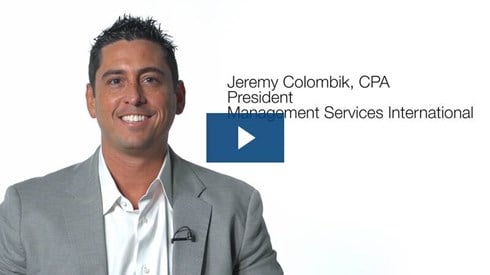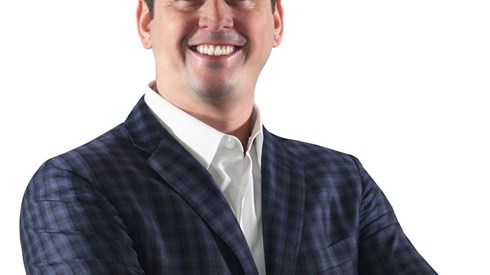Benefits of Captives and Insurers Working Together

Jeremy Colombik , Adam Perea | July 15, 2021

Is a captive a good fit for me? This is a question that is often asked by prospective captive owners. Many have a preconceived notion of how big they need to be for a captive to be beneficial and impactful. Whether a business grosses $1 million or $1 billion in revenue annually, there is likely room for a captive to make a positive impact on its risk management program and lower the overall total cost of risk (TCOR).
Captives give a business the power to reduce its reliance on the commercial insurance market and stabilize premiums for programs whose risk management is under control or improving year over year. Using a captive along with a Demotech or equivalent "A"-rated insurance company creates more opportunity to purchase traditionally unavailable coverages or overpriced coverages that are loss rated for a business and not the "class" of business. Access to reinsurance and excess of loss programs can create a unique blend of self-insurance and fully insured programs. With the ability to customize policy language and take larger retentions, a captive can take more control of the claims process. As an added benefit to a captive insurance company, the premiums and underwriting profits can be invested to increase the financial stability and can give the captive more leverage to take on more risk. By blending a Demotech or equivalent "A"-rated insurance company and a captive, the business that needs the insurance can achieve some of the following benefits.
Reduce the Necessity of Commercial Insurance
Over time, a captive insurance company can generate underwriting profit that can be used to sustainably write greater limits. As a captive's surplus grows, this can be used to increase deductibles and/or move policies from the commercial market to the captive. A deductible optimization can be a useful exercise to undergo while determining the right mix of commercial insurance and the deductible a captive can insure.
One thing that can often deter an owner from taking a large deductible is that an insurer will often require collateral to issue a large deductible policy. These are usually in excess of $100,000. This is where a Demotech or equivalent "A"-rated insurer can issue a policy and encourage captives to insure larger deductibles while not requiring collateral.
Premium Stabilization
In this current hardening market, as owners go into renewals, they are faced with increasing premiums across the board. They are either required to increase deductibles significantly to minimize premium increases or question why the market is setting prices based on an industry classification and the overall performance of the industry rather than the performance of the insured. A captive can help to stabilize pricing by individually loss rating the policies it's writing based on the insured's performance and not the industry class as a whole. If historical losses of an insured are good and continue to remain under control, pairing a captive with an insurance company can provide stability regardless of the broad industry's performance. Keeping rates as flat as possible while maximizing underwriting profits can lower the total cost of risk and provide stability while also protecting an insured's balance sheet.
Ability To Purchase Coverage Unavailable or Overpriced
If a business has unique risks, it can be difficult at times to find coverage in the commercial market. A captive can write policies for those unique risks within a business. Under the current market conditions, insurers are entering and pulling out of market segments constantly, leaving few or no options for risks and often at increasing rates. Captives can insure the uninsurable. When faced with a difficult or hard-to-place risk, using a captive in concert with a Demotech or equivalent "A"-rated insurer may provide solutions previously unavailable.
Reinsurance Options
Having a captive insurance company allows for direct access to reinsurers and eliminates the costs associated with procuring through a traditional insurer. This gives a captive more options to structure an efficient risk management program through larger retentions backed by excess of loss policies and umbrella coverages tailored to an insured's needs. Demotech or equivalent "A"-rated insurers have options for umbrella coverages that enable a captive to take some risk and share in the underwriting profits within the umbrella layer.
Greater Control over Claims
As deductible levels of a program are increased, the captive is also taking back control of the claims process within these layers. Taking a larger deductible on a commercial policy allows for the captive to settle or fight claims as deemed appropriate. If a claim is fraudulent or baseless, the captive can engage a team that can settle a claim per the set policies and procedures. The speed at which claims are settled and paid can be controlled by the captive and not a commercial insurer.
Invest Premiums and Surplus
As with all insurance companies, a captive has the ability to invest the premium and the surplus/reserves according to the investment policy of the company. Over time, the investment income can contribute to the operational costs as well as add to the surplus, giving the captive more financial stability to pay claims or increase the capacity for insurance.
Using a captive along with a Demotech or equivalent "A"-rated insurance partner allows insureds over time to create a risk management program where they have less reliance on the commercial insurance market. This can be accomplished through stabilizing premiums and being able to purchase previously overpriced or unavailable policies. Building a program through reinsurance options and setting limits on the claims controlled by the captive can create a program that will ultimately lower the TCOR to an insured. While traditional insurers are increasing premiums and retentions year over year, we are looking for partners to create programs that provide consistency and longevity.
While the fundamental operation of captives is similar, each captive is unique and customized for the needs of the insured. Captive managers work with brokers and advisers to assess the needs and structure of a program to fit the risk management objectives of the insured.
Jeremy Colombik , Adam Perea | July 15, 2021





